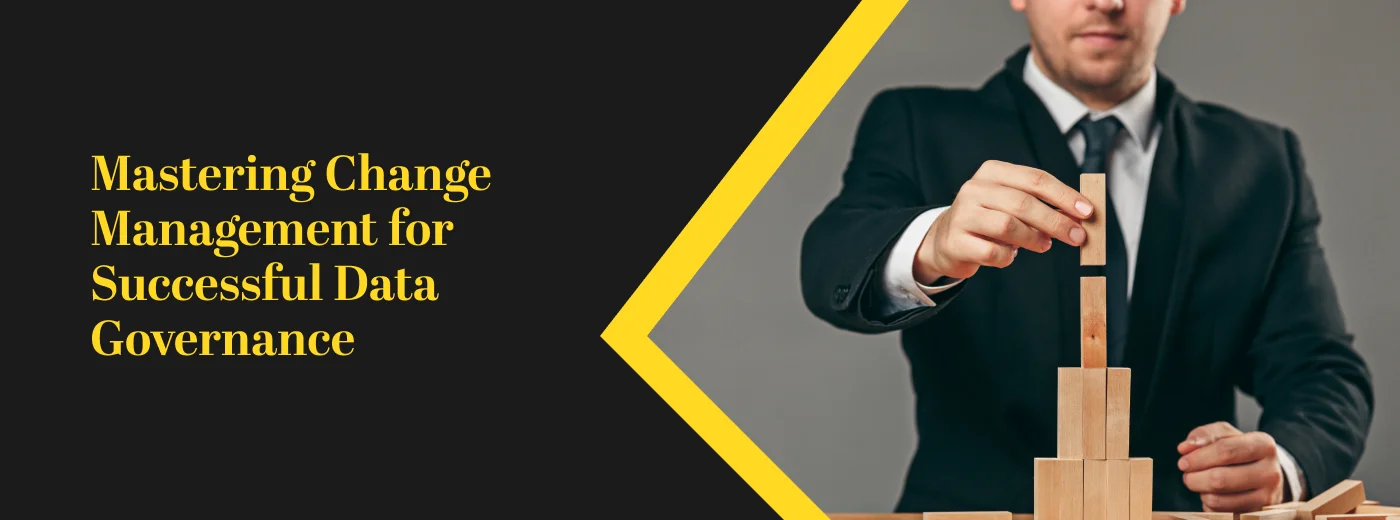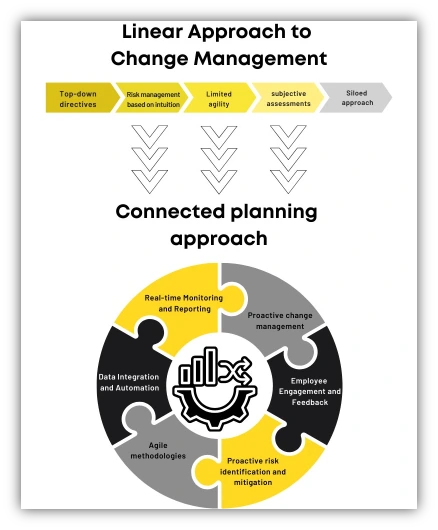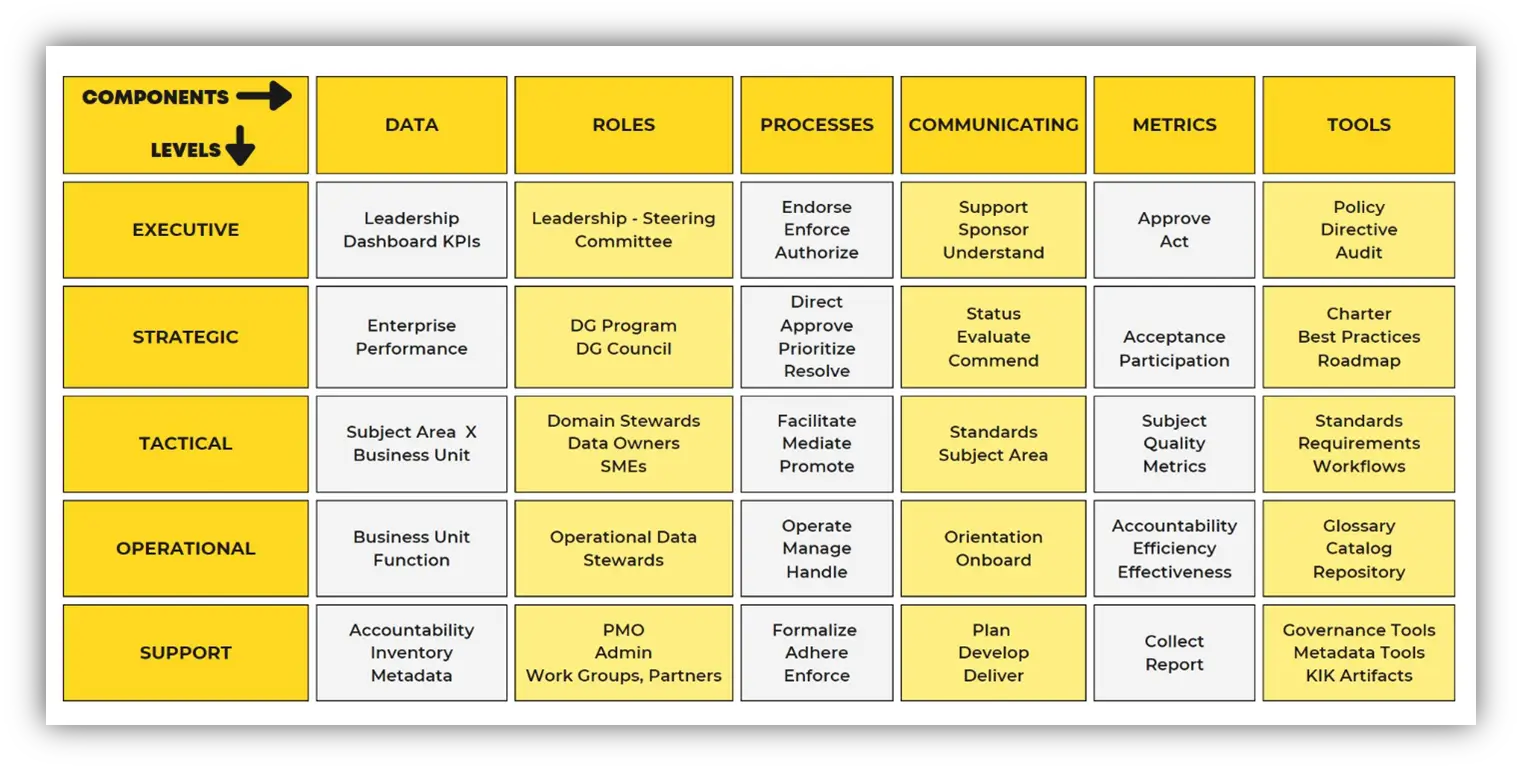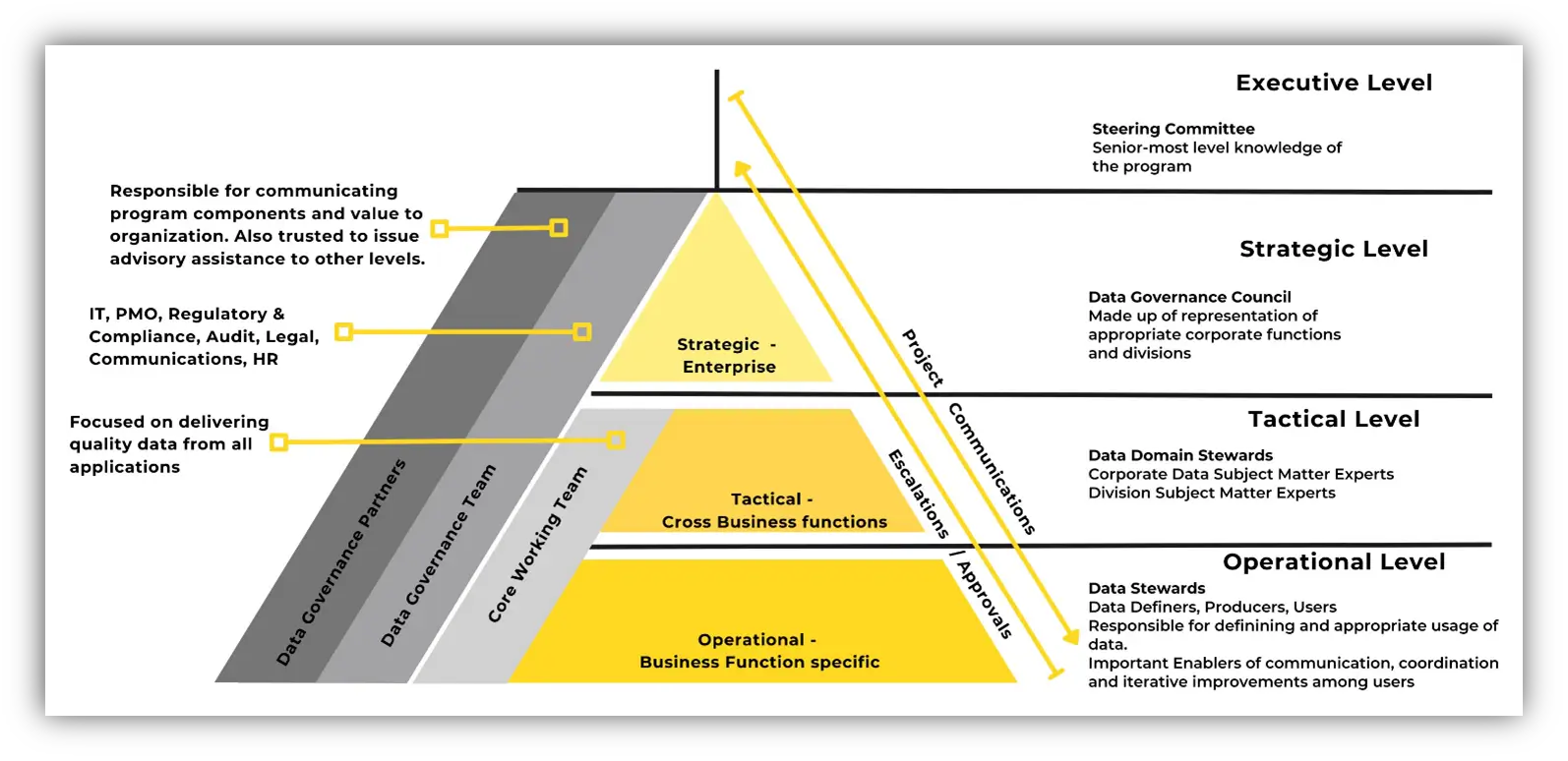
Sign up to receive latest insights & updates in technology, AI & data analytics, data science, & innovations from Polestar Analytics.
Editor's Note: The post-Data Governance period could be daunting for many organizations if a planned transition is not formulated keeping the workforce at the center. Welcome to an exploration of “Mastering Change Management for Successful Data Governance”. Discover the various levels of users involved to make Data Governance a success, KPIs, of practical insights and best practices to navigate complexities, foster a data-driven culture, and uncover the true potential of your organization's data!
There is too much noise in the data floating around.
The CEO of a Fortune 500 Company receives 140 emails (directly or indirectly addressed) on average per day, while a Fortune Company has a whopping 580 IT tickets raised on average every day – an increase of 16% since the pandemic! This entire gamut of Data often leads organization think tanks scratching their heads to come up with newer methods of Data Governance.

Data and information are power. But what good is data if it's disorganized, inaccurate, or underutilized? That's where data governance comes into play. It's the secret sauce that ensures your data is reliable, compliant, and ready to fuel strategic decision-making. However, implementing effective data governance isn't as simple as flipping a switch. It requires a well-executed change management strategy to overcome challenges and pave the way for success.
In the business landscape, Data matures like fine wine and delivers invaluable insights as it ages. Data governance initiatives introduce significant changes that impact people, processes, and technology. Without proper Data management, these initiatives may face resistance, lack of adoption, and ultimately fail to achieve their intended objectives.
Understanding human dynamics
The viability and longevity of data governance projects are critically dependent on change management.
1. Psychological aspects of change: When data governance is implemented, people's attitudes, behavior, and ways of working with data must change. Organizations can better comprehend the human dynamics at work by using change management, which also addresses any employee resistance or fear of change.

According to a study by Prosci, organizations that prioritize change management are 6X more likely to meet or exceed project objectives compared to those that do not.
2. Fostering Buy-in and Awareness: The organization-wide development of awareness and buy-in could be facilitated by a culture of data literacy to communicate the impact of data governance on data quality, data-driven decision-making, and business outcomes is a part of this. Companies that develop a data-literate culture can perform better than their competitors and acquire a competitive advantage.
3. Reducing Resistance and Ensuring Adoption: >One of the main obstacles to adopting data governance is resistance to change. It is crucial to address worries and fears through open communication, training, and support, such as those related to job position changes or a sense of losing control. Actively managing resistance increases the likelihood of project success, ensuring a smooth transition to the new framework.
Managing Process and Technology Changes
1. Aligning existing processes: According to Gartner, organizations that successfully align data governance with existing processes experience 50% fewer data-related errors and can save up to 20% in operational costs. Aligning processes ensures smooth integration and improved data quality.
2. Implementing data governance technologies effectively: Research indicates that organizations that provide comprehensive training on data governance technologies to their employees see a 50% increase in user adoption and efficiency. Investing in proper training and support helps employees leverage technology effectively and drives successful data governance implementation.
Chalking Out Data Governance Strategy In The Multi-Cloud Environment
3. Ensuring a smooth transition and minimal disruption: Change often disrupts established routines. Minimize disruption by carefully planning the implementation, communicating changes effectively, and providing adequate support to employees during the transition phase. A Prosci study found that organizations that effectively manage change during technology implementations are six times more likely to meet or exceed project objectives. By planning the implementation carefully, communicating changes, and providing support, organizations can minimize disruption and ensure a smoother transition to data governance.
Before embarking on any transformative endeavor, it's essential to understand where you currently stand. Assessing the current data governance landscape provides valuable insights into existing processes, systems, and data quality issues. Simultaneously, identifying key stakeholders ensures that the right individuals are involved from the start, fostering a sense of ownership and collaboration.
Evaluating the Current Data Governance Landscape
1. Conducting a comprehensive data governance assessment: Research shows that organizations that conduct thorough data governance procedures experience a 40% improvement in data quality and a 30% reduction in data-related risks. Assessing the current state helps identify areas for improvement and prioritize efforts effectively.
2. Identifying gaps and areas for improvement: According to TDWI, organizations that proactively identify and address data governance gaps achieve a 60% higher success rate in data analytics initiatives. By pinpointing gaps, organizations can focus on areas that have the most significant impact on data quality and compliance.
3. Assessing data quality and compliance issues: Poor data quality can cost organizations an average of $15 million annually, according to Gartner. By evaluating data quality and compliance issues, organizations can quantify the potential risks and make a compelling case for data governance implementation.
Identifying Key Stakeholders
Data Governance involves the diligent involvement of users across all levels having unique expectations and responsibilities across various components as shown –

Now let us look at the interdependence of various operating levels on one another and their deliverables with respect to different components.

Successful Data Governance hinges on the coordination, communication, feedback mechanisms, and acceptance within various layers of the organizations as explained above.
1. Mapping the data governance ecosystem: According to Forrester, organizations that involve a broad range of stakeholders in data governance initiatives experience a 25% increase in data governance success. Mapping the data governance ecosystem helps identify the right individuals and departments that play a crucial role in data governance.
2. Identifying executive sponsors and champions: Research suggests that executive sponsorship is the single most significant factor contributing to the success of change management initiatives. By securing executive sponsors and champions, organizations demonstrate top-level commitment and support for data governance adoption.
3. Data Stewards – the governance drivers: They are responsible for monitoring and maintaining data quality, establishing and enforcing data standards, and safeguarding sensitive information. Data stewards collaborate with data security and compliance teams, ensuring data handling practices adhere to regulatory requirements and data privacy policies. They also manage metadata and maintain a comprehensive data catalog, promoting consistency and standardized data usage across the organization.
4. Engaging stakeholders from different departments and levels: A survey by Harvard Business Review found that organizations that involve employees at all levels in decision-making experience a 32% increase in project success rates. Engaging stakeholders from different departments ensures diverse perspectives, enhances collaboration, and improves the overall effectiveness of data governance adoption.
While data governance establishes the rules and processes for managing data effectively, it's the change management process that ensures these practices are embedded into the organization's culture.
Without a well-structured change management approach, employees may resist these changes, leading to inconsistent data practices and limited adoption of data governance policies. Change management helps communicate the benefits of data governance to all stakeholders, provides the necessary training and support to ensure smooth transitions, and fosters a sense of ownership and accountability for data-related initiatives.
High-performing organizations are 3.5 times more likely to use data to inform change efforts and 4 times more likely to gain worker input when shaping changes. However, very few organizations have grasped the concept of using data, supported by technology, to drive change – the primary reason being the human and technological sides of transformational change have been on opposite sides of the stadium.
Let us look at the best practices to bring about a comprehensive change management process: 🚀
1. Create a well-structured change management strategy: that outlines the goals, objectives, and strategies for your adoption path. Stakeholder analysis, communication tactics, training and development initiatives, and performance evaluation procedures should all be part of this plan. To enhance data quality and enable data-driven decision-making throughout its operations, P&G started a data governance journey. They put into action a thorough plan that included conducting focused training and setting up a governance council to manage the adoption procedure. They reduced data mistakes by 20%, shortened the reporting process, and realized considerable cost savings due to better data quality.
2. Establish Ownership Management: Ownership management is crucial in data governance adoption as it defines clear roles and responsibilities for data stewardship. The individuals are responsible for maintaining data quality, resolving data-related issues, and enforcing data governance policies. Regular communication and training sessions can help data owners understand their roles and empower them to drive change within their respective domains.
3. Provide Training and Education: Invest in comprehensive training programs like the Train the Trainer approach to build data literacy and provide the necessary skills for employees to adapt to new data governance processes. Offer workshops, webinars, and documentation that explain the concepts, principles, and practices of data governance. Provide ongoing support and resources to help employees understand their roles and responsibilities within the data governance framework.
4. Monitor and Measure Progress: Regularly monitor the progress of data governance adoption to identify areas of success. Establish KPIs and metrics such as the number of requests for changes, the percentage of user stories supported by customers to assess the effectiveness of the change management efforts. Use feedback mechanisms such as surveys, focus groups, and feedback loops to gather insights from stakeholders and make necessary adjustments to the change management strategy.
5. Implement best practices for Change Management: To establish a central repository for best practices, design, and structure the repository with intuitive categorization. Document necessary guidelines, templates, case studies, and success stories. Choose a collaborative platform for multiple contributors, implement version control, and incorporate robust search functionality. Define user access and permissions, promote awareness and adoption, and provide a feedback mechanism for continuous improvement.
How To Manage Change For Successful Enterprise Analytics Adoption
Systematic Change management process 🚀
ADKAR Model: The ADKAR model, one of the most widely referred sets of guidelines to formulate Change Management – focuses on individual change and outlines the key elements necessary for successful change adoption.
The acronym ADKAR stands for:
The ADKAR model helps organizations identify and address barriers at each stage of the change process and enables a structured approach to individual change management.
By incorporating change management principles into the implementation of data governance, organizations can overcome resistance, align processes and technology, and ensure a smooth transition. The numbers and statistics mentioned demonstrate the tangible benefits of change management in successful data governance.
At Polestar Analytics we aim to help you in developing a clear change management vision and strategy, effective communication, stakeholder engagement, managing resistance, and measuring success in the journey of mastering data governance. Connect with us now! 💯
About Author

Sports and Tech Enthusiast
In a world of opinions and cold numbers, data tells a compelling story.